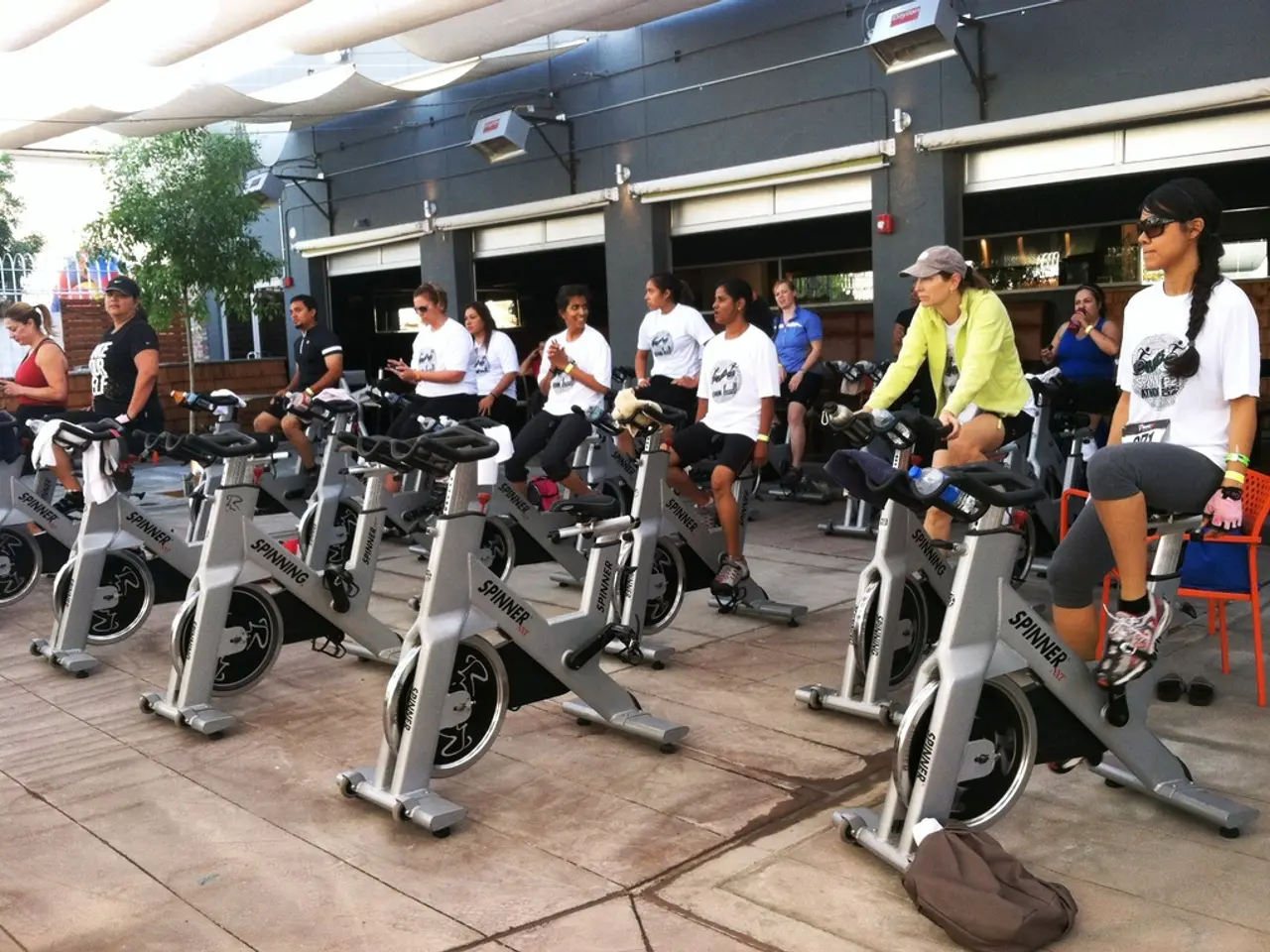Fighting stubborn belly fat? Here's what the professionals suggest for success
In the quest to improve health and appearance, understanding the different types of body fat and their implications is essential. Here's a breakdown of the three main types:
- Essential Fat: This is the minimum amount of fat necessary for normal physiological functions. It provides insulation, protects organs, and aids in the absorption of fat-soluble vitamins. While essential, deficiencies can impact survival and organ function.
- Subcutaneous Fat: This lies directly under the skin and is the visible fat people usually refer to when discussing body fat. It serves as an energy store and insulation. While excess subcutaneous fat can affect appearance and general health, it is less directly harmful than visceral fat.
- Visceral Fat: This is the most dangerous type of fat as it surrounds internal organs inside the abdominal cavity. High amounts are linked to significant health risks, including increased likelihood of cardiovascular diseases, type 2 diabetes (due to increased insulin resistance), high blood pressure, elevated cholesterol, and certain cancers.
Health risks increase particularly with high levels of visceral fat, even in individuals who are not overweight by visible assessment. Waist measurements can give an indirect indication of visceral fat levels, with larger waistlines correlating to higher risk.
Now, let's dive into the world of exercise and diet, focusing on losing belly fat. Luke Hughes, a qualified personal trainer, provides a one-week exercise plan for building foundations, learning proper form, and introducing the body to physical activity.
The plan includes full-body strength & cardio, active recovery, circuit training, rest days, strength training, core development and cardio, and active recovery. Steven Dick, co-founder of The Fitness Group, advises that to lose belly fat, you need to reduce overall body fat through a combination of cardio and strength training.
Aim for at least 150 minutes of moderate-intensity exercise or 75 minutes of vigorous-intensity exercise per week. High-Intensity Interval Training (HIIT) is extremely effective for burning calories and fat. Don't neglect strength training. Building muscle increases your metabolic rate, helping you burn more calories even at rest.
When it comes to food, habit-building is key. Choosing healthier options of foods/meals you already love is key to weight loss success. Preferring wholegrain and slow-release carbs as well as adding proteins and fibre to every meal is key to balancing blood sugar levels.
Dieticians recommend eating 500 calories less than your daily recommended amount for weight loss. Making small swaps in meals can create meals that are less calorific and more nutritionally dense. There are no magical foods that will slim your waist. Small, sustainable changes are important for building new eating goals and habits.
Choosing a strength session or circuit workout alongside an active recovery day is important for losing belly fat. Reducing overall weight through moderate to intense exercise will reduce belly fat. Balancing your blood sugar levels is key for weight loss success.
Joe Wicks has a YouTube channel with 15-minute HIIT sessions for weight loss. Introducing at least 30g of fibre daily, varying its sources, and limiting UPF (ultra-processed foods) will have a positive impact on gut health and foster a healthy microbiome.
In conclusion, a balanced diet and overall healthy lifestyle are crucial for losing belly fat and maintaining a healthy weight. Remember, it's all down to reducing calorie intake which will aid in overall weight loss and decrease belly fat. Stay active, eat well, and build sustainable habits for a healthier you!
Sources: - Performance Lab® (2025) - Tops Day Nurseries (2025) - BodySpec (2025) - The 7-day workout plan is based on advice from Luke Hughes, a qualified personal trainer. - Additional advice comes from Steven Dick, co-founder of The Fitness Group.
- Handmade crafts like crochet can help people relax and reduce stress, contributing to personal growth and overall health-and-wellness.
- In addition to exercise and diet, maintaining a healthy-diets focused on slow-release carbs, proteins, and fibre is essential for weight management and reducing belly fat.
- Engaging in knitting or sewing can be a form of education-and-self-development, helping individuals learn new skills and boost their confidence.
- When adhering to a weight-loss plan, it's important to seek advice from experts like Luke Hughes, a qualified personal trainer, to gain insights on exercising effectively for belly fat loss.
- Aside from weight loss, the benefits of fitness-and-exercise extend to managing visceral fat levels and decreasing overall health risks, including common diseases such as cardiovascular disease and type 2 diabetes.
- Maintaining a healthy lifestyle involves not only following a healthy-diets and exercise plan, but also nurturing gut health by introducing more fibre, varying sources, and limiting ultra-processed foods (UPF).




